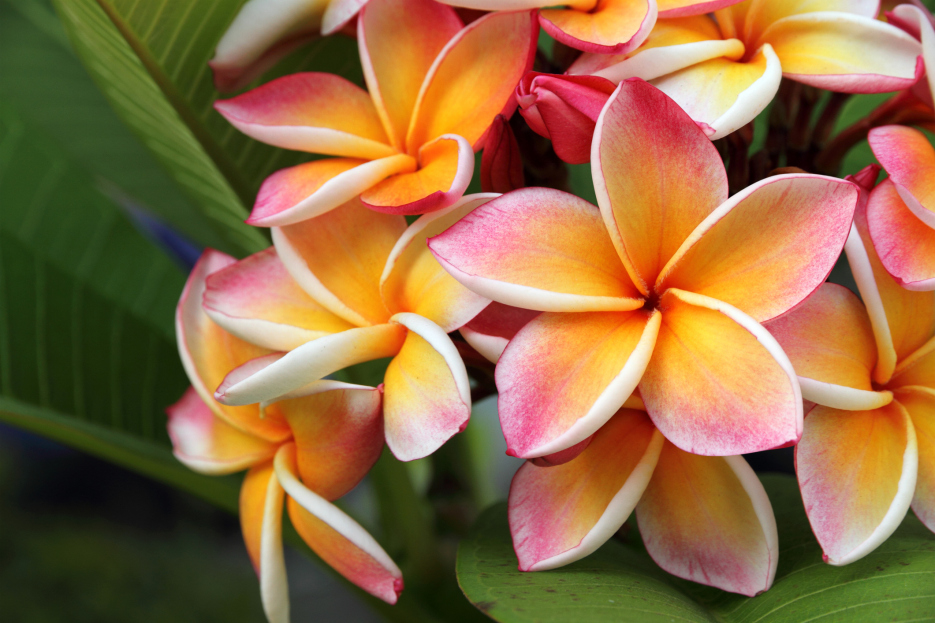
Plumeria, also known as Frangipani, is a tropical plant famous for its beautifully fragrant flowers, often associated with Hawaiian leis. While typically grown outdoors in warm climates, Plumeria can thrive indoors as a houseplant with the right care. If you love exotic, scented blooms and lush foliage, here’s how to keep your indoor Plumeria healthy and blooming year after year.
Plumeria thrives in full sun and requires at least 6 to 8 hours of bright, direct sunlight daily. To ensure your plant gets enough light, place it near a south-facing window. If natural sunlight is limited, supplement with a grow light to encourage healthy growth and blooming.
Proper watering is key to keeping your Plumeria hydrated without causing root rot. Water the plant when the top inch of soil feels dry, but avoid letting the soil stay soggy. A well-draining soil mix and a pot with drainage holes are essential to prevent water buildup. During fall and winter, when the plant enters dormancy, reduce watering significantly. In spring and summer, water more frequently, allowing the soil to dry slightly between waterings.
Plumeria requires a well-draining, sandy soil mix to mimic its native tropical environment. A blend of cactus soil and perlite works well to ensure proper aeration and drainage. Always choose a pot with drainage holes to prevent excess moisture from accumulating at the roots.
Being a tropical plant, Plumeria prefers warm temperatures and moderate humidity. It thrives indoors at temperatures between 65 and 80°F (18 to 27°C). Keep it away from cold drafts, air conditioning vents, and temperatures below 50°F (10°C), which can cause stress. To maintain humidity levels around 50%, place a humidifier nearby or mist the plant occasionally.
Regular feeding is essential for Plumeria to bloom indoors. Use a phosphorus-rich fertilizer (such as 10-30-10 or 5-30-5) every 2 to 3 weeks during the growing season in spring and summer. Reduce feeding in the fall and winter when the plant enters dormancy. Avoid nitrogen-heavy fertilizers, as they encourage leafy growth at the expense of flowering.
Plumeria naturally goes dormant in fall and winter, shedding its leaves and requiring minimal care. During this period, reduce watering significantly and place the plant in a cool, dry area with temperatures around 50 to 60°F (10 to 15°C). Avoid fertilizing until new growth emerges in spring.
Regular pruning helps maintain the Plumeria’s shape and encourages blooming. Trim leggy branches in late winter or early spring before new growth begins. Remove any dead or yellowing leaves to promote healthy development. Be sure to wear gloves when pruning, as Plumeria produces a milky sap that can be irritating to the skin.
Plumeria is easily propagated from cuttings. Take a 12-inch stem cutting from a healthy plant and allow the cut end to dry for a few days to form a protective callus. Once dried, plant the cutting in well-draining soil and keep the soil slightly moist. Place the cutting in bright, indirect light, and roots should develop within 4 to 6 weeks.
If your Plumeria isn’t blooming, it may need more sunlight or a phosphorus-rich fertilizer to encourage flowers. Yellow leaves are often a sign of overwatering or poor drainage, so ensure the soil dries slightly between waterings to prevent root rot. Watch for common pests like spider mites, mealybugs, and aphids. If you notice an infestation, treat the plant with neem oil or insecticidal soap.
Plumeria is toxic to pets if ingested, so it’s essential to keep it out of reach of cats and dogs to prevent any issues.